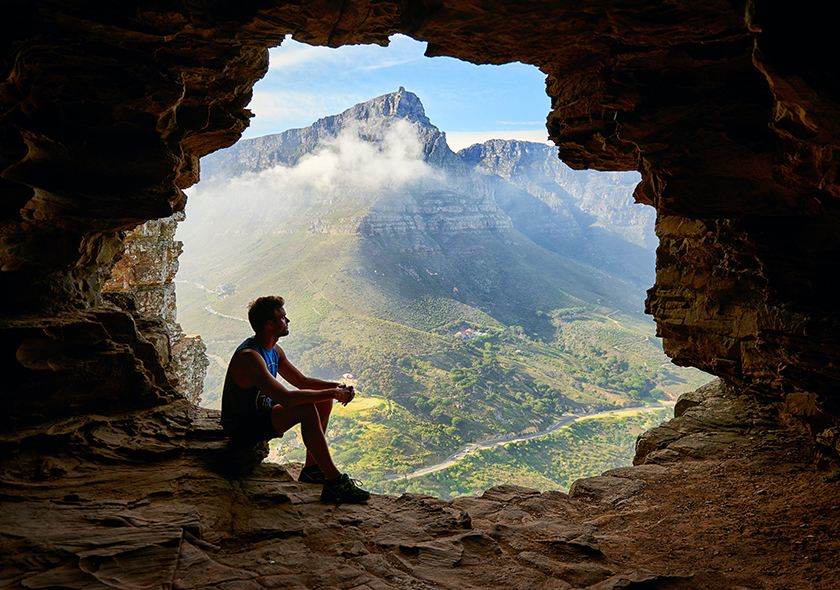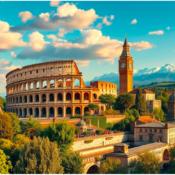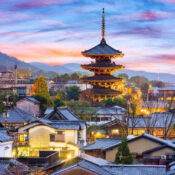15 Best Amazing Places To Explore In China
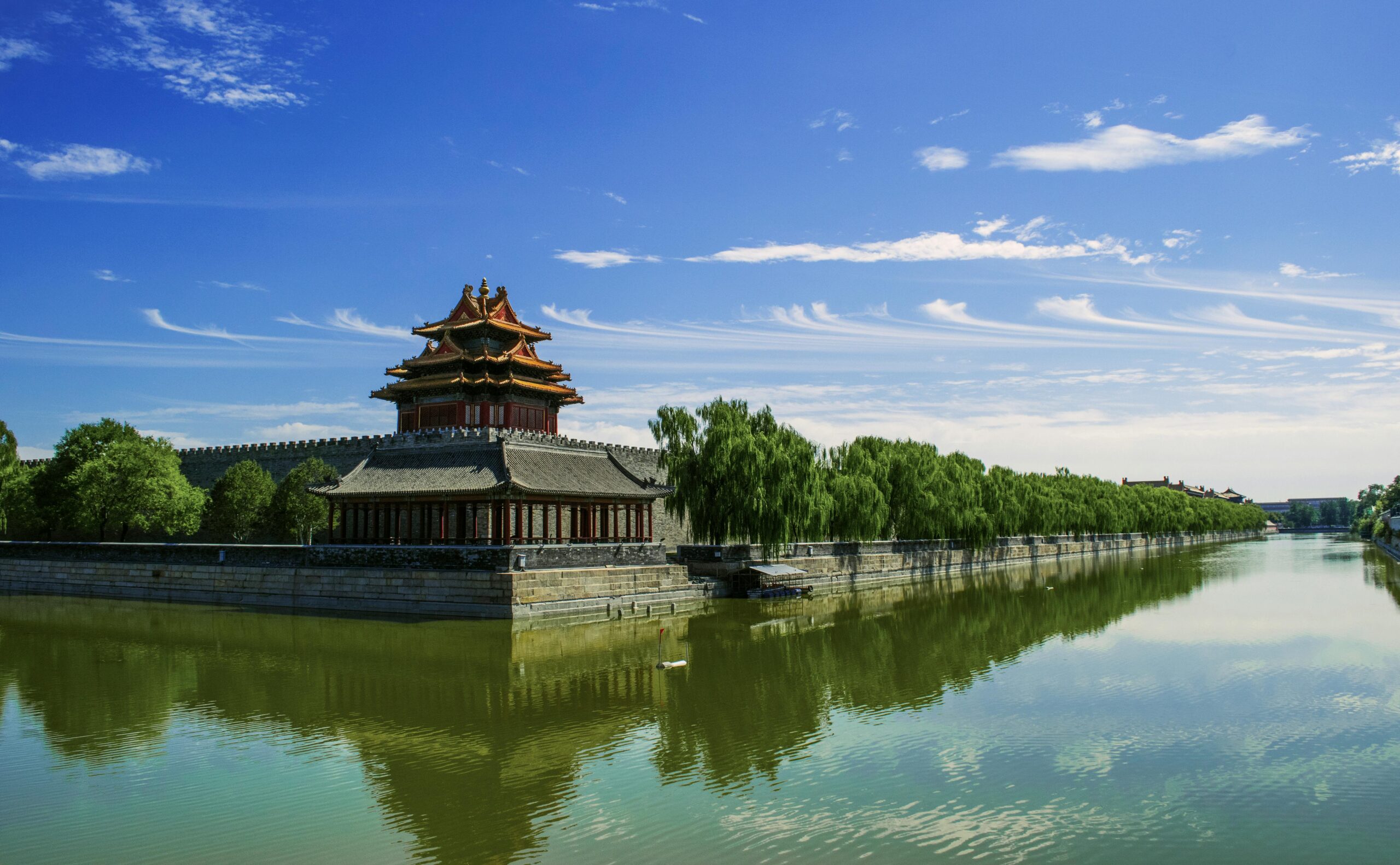
15 Best Amazing Places To Explore In China
More than 700 years have passed since the world learned about China through the traveler Marco Polo’s writings, and since then, this vast Asian nation has come to represent everything exotic and enigmatic. This huge nation is nonetheless fascinating even after decades of economic expansion. Indeed, the fascination with a culture that is thousands of years old has only grown due to the contrast between China’s traditional practices and the emerging ultra-modern state.
Chinese people take great pride in their culture, as demonstrated by the preservation of significant historical sites like Beijing’s Summer Palace and Forbidden City, which both serve as reminders of the country’s emperors’ past. Of course, there also the renowned Great Wall, which stretches 6,700 kilometers from the Yellow Sea to Central Asia and home to innumerable sites that infused with the essence of ancient Eastern religions.
Owing to its vastness, China presents countless opportunities for discovery for travelers. This country is bursting with amazing experiences and sites to see, whether you decide to take a luxurious cruise ship through the scenic Yangtze Gorges, see a busy metropolis, or find peace and quiet in an old temple.
With our list of the best tourist attractions in China, you may find intriguing, uncommon, and daring activities to do.
Best Places to Visit in China:
Below are the best places to explore in China:
1. The Great Wall of China:
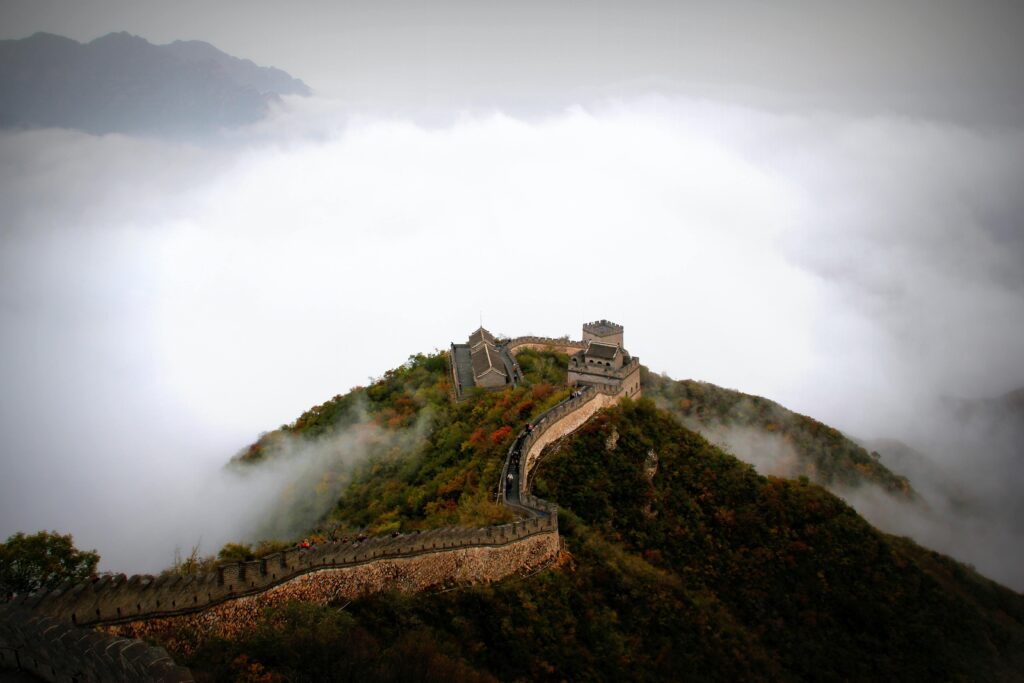
The proverbial “Nobody can be a true hero unless he has been on the Great Wall” well recognized in China and exemplifies the significance attached to this exceptional historic structure.
The beautiful Great Wall of China, sometimes referred to as the Long Wall or “Changcheng” in Chinese, runs over 6,000 kilometers from Jiayuguan in the west to the castles of Shanhaiguan in the east. It travels through Inner Mongolia, Ningxia, Gansu, and Hebei, Tientsin, and Beijing, which are home to the best-preserved portions of the wall.
The wall is wide enough in some places to allow five horses or ten men to pass, with an average height of six to eight meters and a maximum height of sixteen meters. It adorned with many battlements and watchtowers. The best-known portions of the wall added when its various parts connected around 210 BC, while some of its earliest fortifications date as far back as the 7th century BC.
The most popular part of the wall nowadays is located northwest of Beijing, close to Badaling Pass, and is easily accessible by organized excursions or public transportation. A visit to the rebuilt areas at Mutianyu, which only 70 kilometers northeast of Beijing, and the area around Gubeikou, which is 130 kilometers from Beijing, highly recommended.
2. Beijing Forbidden City & Imperial Palace:
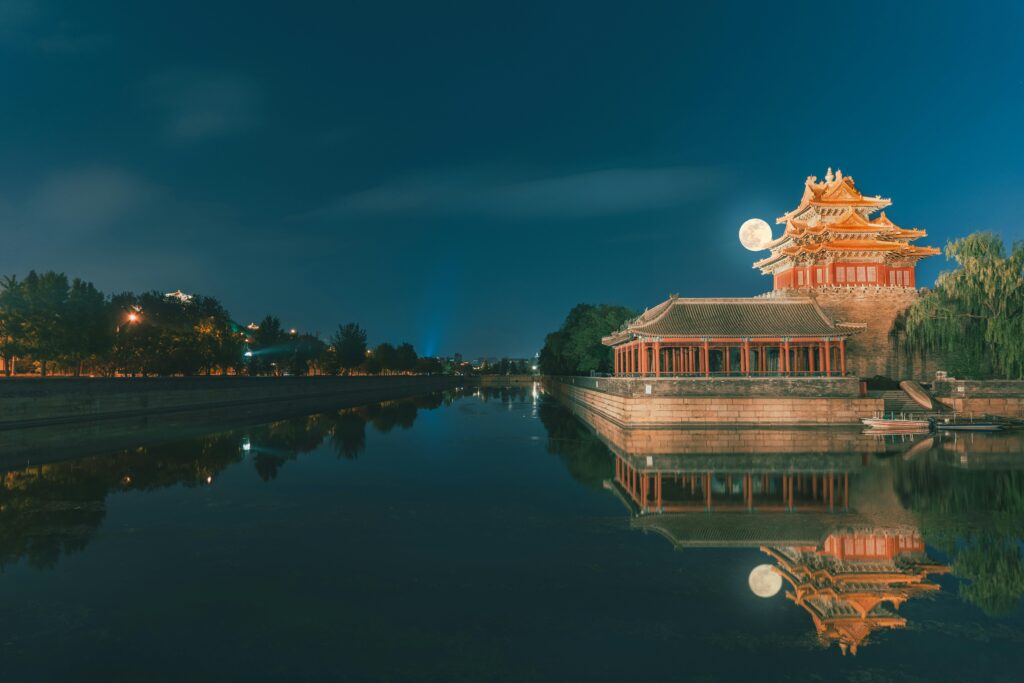
The Imperial Palace, China’s biggest and most significant structure, is a must-see for tourists traveling around the nation. It is located right in the center of Beijing. Commencing in the Yuan Dynasty between 1271 and 1368, most of the current complex constructed between 1406 and 1420.
The enormous complex, which housed 24 Ming and Qing Emperors, was a collection of truly magnificent buildings that prohibited anyone else from entering save the imperial family and their courtesans. Encompassing over 720,000 square meters and safeguarded by a wall topped at 10 meters, complete with watchtowers and a broad moat, this enormous complex comprises sections designated for ceremonial and administrative functions, in addition to the emperor’s own home.
Highlights include the magnificent emperor’s dinner hall (the Hall of Preserving Harmony), the five white marble Golden River Bridges, and the 35-meter-tall Hall of Supreme Harmony, which houses the imperial throne. Seeing everything can take many hours.
Another must-see is the Palace Museum, which has a sizable collection of works of art and artifacts from the Ming and Qing eras.
Fine examples of ceramics and paintings are among the highlights. The museum also holds the nation’s extensive collection of significant bronze and jade artwork. There tours of the museum offered in English.
The Temple of Heaven and the well-known Tiananmen Square are two other noteworthy sites close to the Imperial Palace. Founded in the fifteenth century, this magnificent temple is among the most significant religious locations in the nation.
3. Terracotta Army,China:
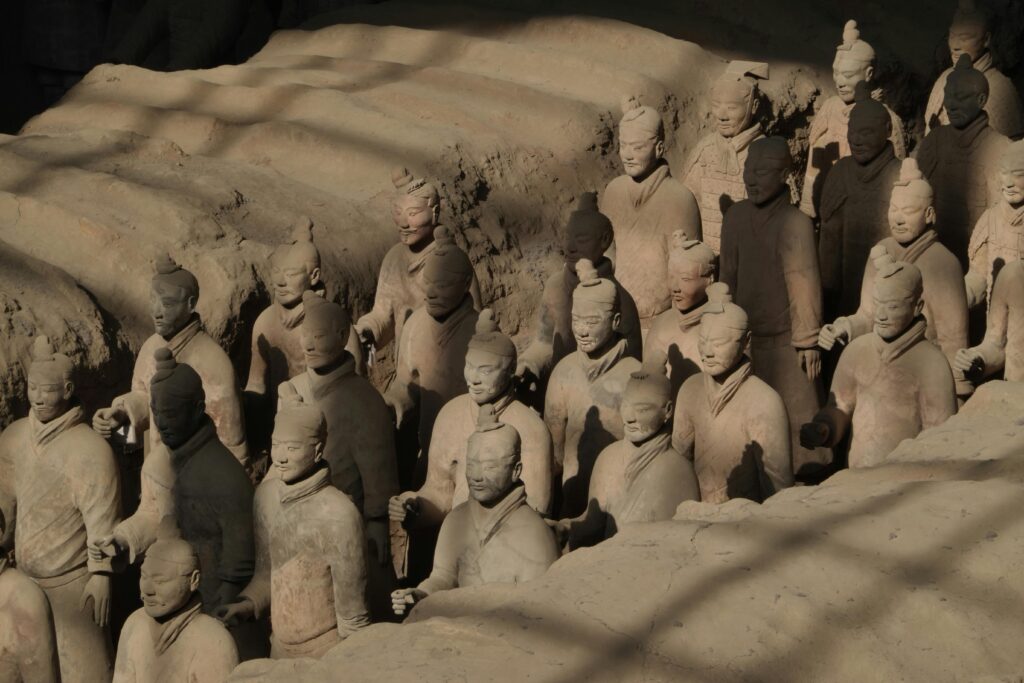
Farmers in the 1970s accidentally discovered the Terracotta Army, which would go on to become China’s most significant archeological discovery, while excavating wells on the outskirts of Xi’an.
The find, which made up of three sizable underground trenches and was intended to protect the grave of the First Emperor, had over 8,000 life-size warriors, about 520 horses, and over 100 chariots in addition to a considerable number of other non-military figures from approximately 280 BC. Many of the statues uncovered have painstakingly reassembled and stand as a witness to the emphasis given upon the emperor and the afterlife. Even though some seriously damaged owing to the passage of time.
As a part of the Emperor Qin Shi Huang’s Mausoleum Site Park, this amazing discovery is one of the most popular tourist attractions in China. It provides the unique opportunity to observe this gathering of warriors and horses as though examining a centuries-old procession.
4. Summer palace,Beijing China:
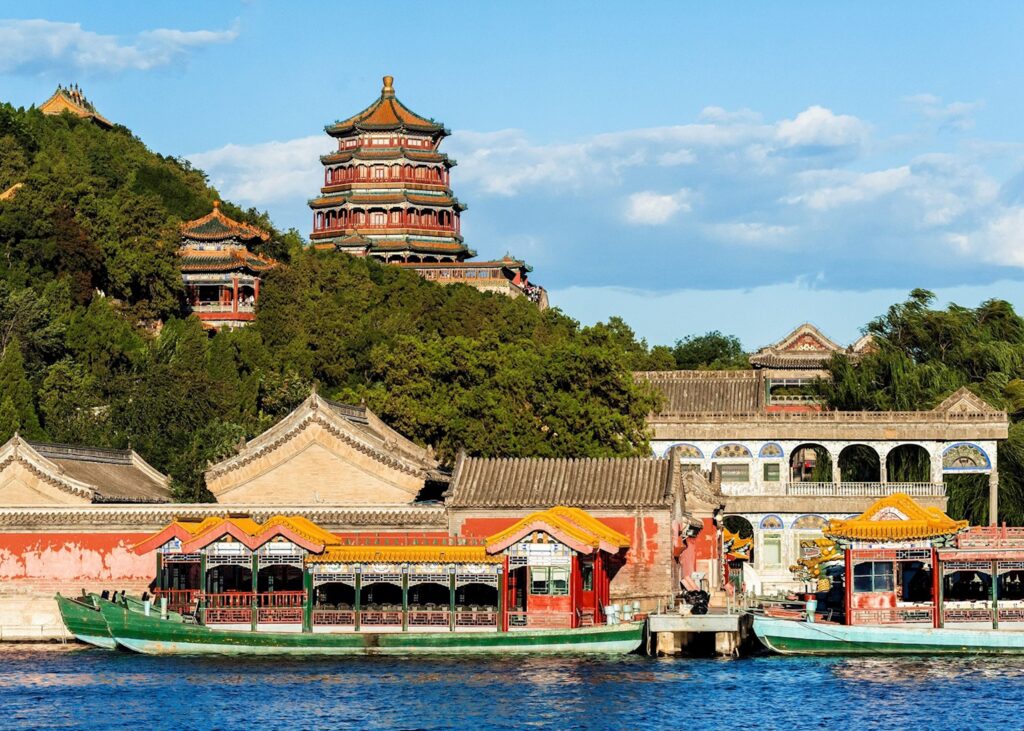
One of the most popular tourist destinations in China, the opulent Imperial Summer Palace (Yíhé Yuán) lies in amidst over 700 acres of stunning parkland and can easily reached from Beijing after a 15-kilometer trip. Although the palace constructed in 1153, the Imperial Gardens were improved in the 14th century with the addition of a sizable lake.
Highlights are the exquisite Great Theatre, a private three-story building constructed in 1891 to satiate the imperial family’s passion of opera, and the spectacular Hall of Benevolence and Longevity (Renshou Dian), complete with its throne. It is worth going to see a performance or show at this ancient location, which is still utilized for musical events and performances of traditional Chinese plays.
The Hall of Happiness and Longevity (Le Shou Tang Hall), with its exquisite gardens and courtyards, as well as miles of scenic walkways and walking trails, are additional highlights.
Try to see the Old Summer Palace remains at Yuanmingyuan Park as well, if time permits. This imposing building, which was allegedly once among the most ornate and aesthetically pleasing palaces in the nation, was demolished by colonial forces in the middle of the 1800s.
5. Li River:
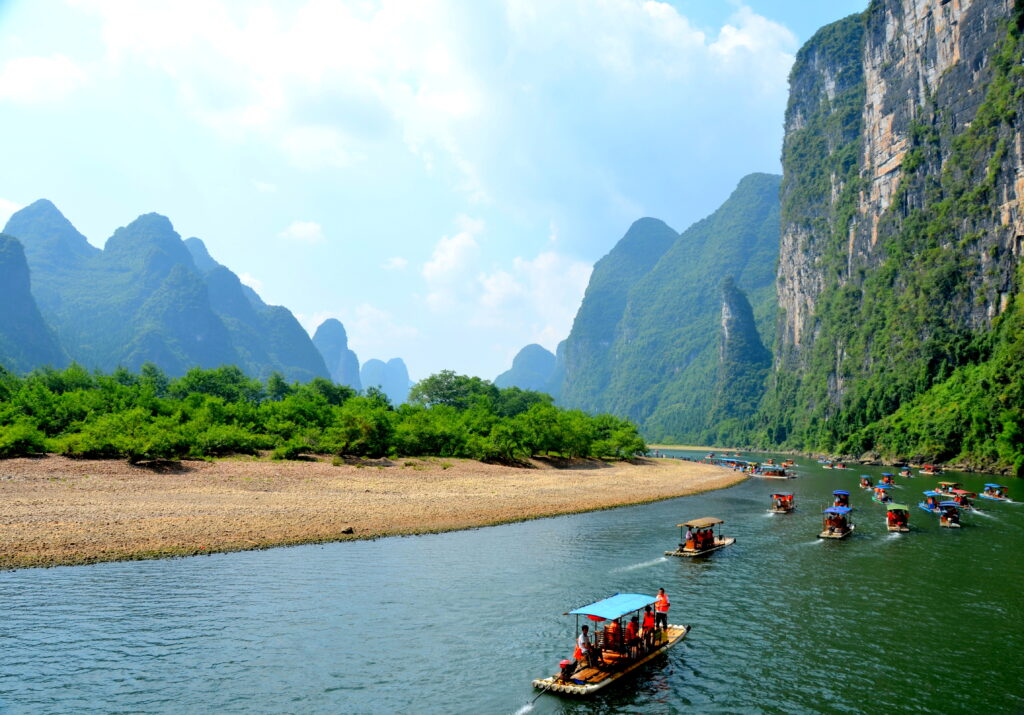
Located in the northeastern region of Guangxi, the town of Guilin is home to some of China’s most breathtaking landscapes. It is well-known for the Li River, which flows through the town and the karst mountains that surround it.
Although this distinctive landscape has inspired poets, artists, and innumerable fairy tales and legends for hundreds of years, it is also a famous destination for travelers from all over the world who come to witness this natural wonder up close.
A trip down the Li River is the ideal way to experience the area. The most well-known section of the river is from Guilin to Yangshuo, where it meanders serenely through over 80 kilometers of breathtaking caverns and rock formations with lyrical names like Reed Flute Cave, Elephant Trunk Hill, and Mount of Unique Beauty.
Depending on the kind of boat being utilized, you can select from modest bamboo punts and tourist cruise ships. Trips can last anything from a few hours to several days.
6. Chegdu Research base Giant Panda:
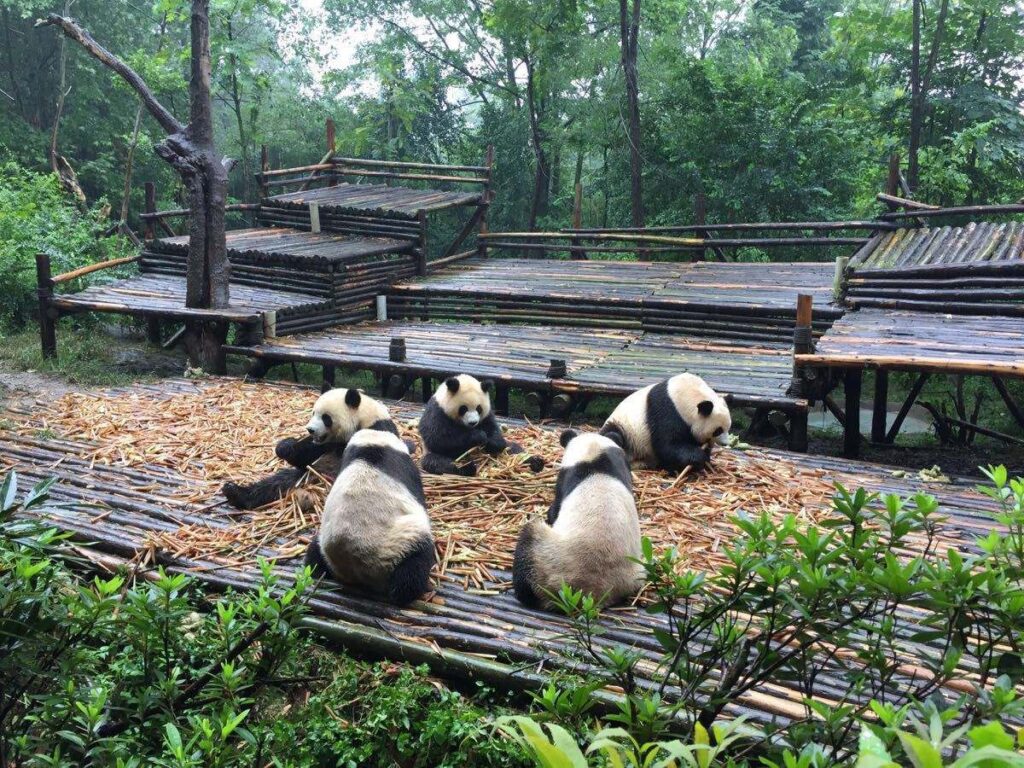
A trip to China wouldn’t be complete without seeing pandas at least once. if the greatest site to see these fascinating creatures in a close approximation to their native habitat is at the outstanding Research Base of Giant Panda Breeding in Chengdu, in the province of Sichuan, even if the nation’s leading zoos offer many fine specimens of them.
Here, in the expansive park-like setting of the facility. You may witness up to 80 pandas going about their everyday lives, from playing to foraging. You may see these magnificent animals up close and learn a lot about them from the numerous permanent exhibits and displays that describe the ongoing conservation efforts being made to ensure their continued existence.
Try to schedule your visit during the morning feeding times, if possible. It’s also the time of year when you’ll obtain some truly unforgettable pictures since the pandas are at their most active. Even better, enlist in one of the special volunteer programs. That offer hands-on experiences feeding and caring for these adorable animals; you could even get to hold a baby panda. There are tours offered in English.
7. Yangtze River,China:
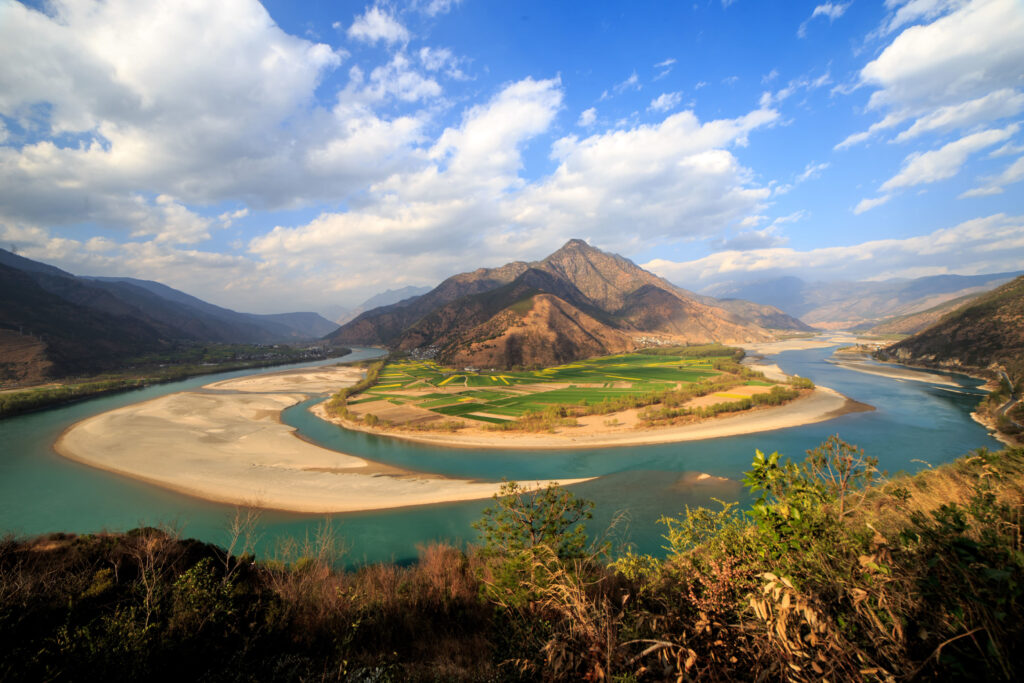
The Yangtze River, sometimes called Chang Jiang, or “Long River” in Chinese. China’s longest and most significant river, spanning over 6,000 kilometers. In addition, it is the third longest river in the world, ranking behind the Nile and the Amazon.
The Yangtze River flows through eight provinces from Tibet in the west to Shanghai in the east. With 2,700 kilometers of navigable water, the Yangtze has the main transportation route in China for more than 2,000 years. With its 700 tributaries, its enormous catchment area makes up a quarter of the nation’s agricultural land. Approximately one-fifth of the country’s overall area.
The stunning Three Gorges are the river’s most well-liked tourist destination. Its great length guarantees that it can be seen at many locations around China. They span a 200-kilometer area between the towns of Fengjie and Yichang. And go by the names Qutang, Wu, and Xiling. Here, in a section of landscape as striking as the Grand Canyon. The river meanders through gorges with their jagged cliffs and lofty mountain peaks. Interspersed with sections of roaring torrents and treacherous shallows.
There are numerous ways to experience the area; from opulent riverboat excursions that highlight the historical sites and picturesque spots in the area to strenuous adventure trips that take you along the most breathtaking stretches of the river, there are plenty of possibilities.
8. Classical Gardens of Suzhou,China:
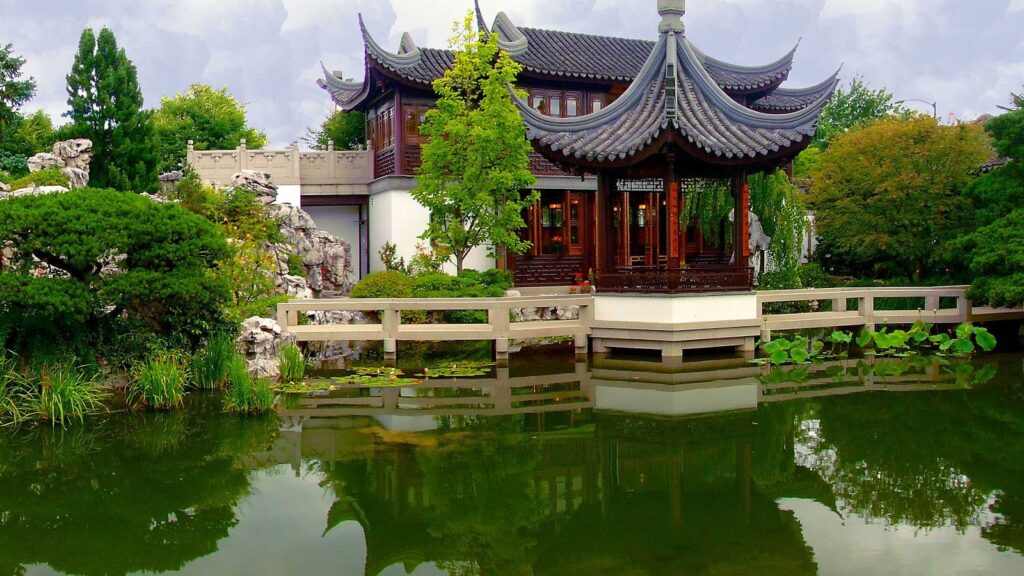
Situated on a UNESCO World Heritage Site, the Classical Gardens of Suzhou. Regarded as one of the most significant ancient gardens globally. Must be a top priority on any travel itinerary to China. These exquisite gardens, one of at least 270 planted here. Situated in the historic city of Suzhou in Jiangsu province. They were constructed in the 11th century, during a period of tremendous growth for the city.
The charming Garden of Lingering is the most well-known of the rebuilt gardens that have survived. On the location of a park that first established during the Ming Dynasty, this seven-acre garden was designed in 1800. Among the most well-known garden complexes in China. It features a swimming pool, a few charming structures, a man-made hill, a peach tree grove, and a gorgeous. Covered pathway with over three hundred stone tablets etched with ancient Chinese inscriptions hanging on the walls.
The Garden of the Cang Lang Ting Pavilion is also well worth a visit. Among the many distinctive characteristics of this two-acre garden is the twin arcade that links the inner and outside areas.
9. Tibet Potala Palace:
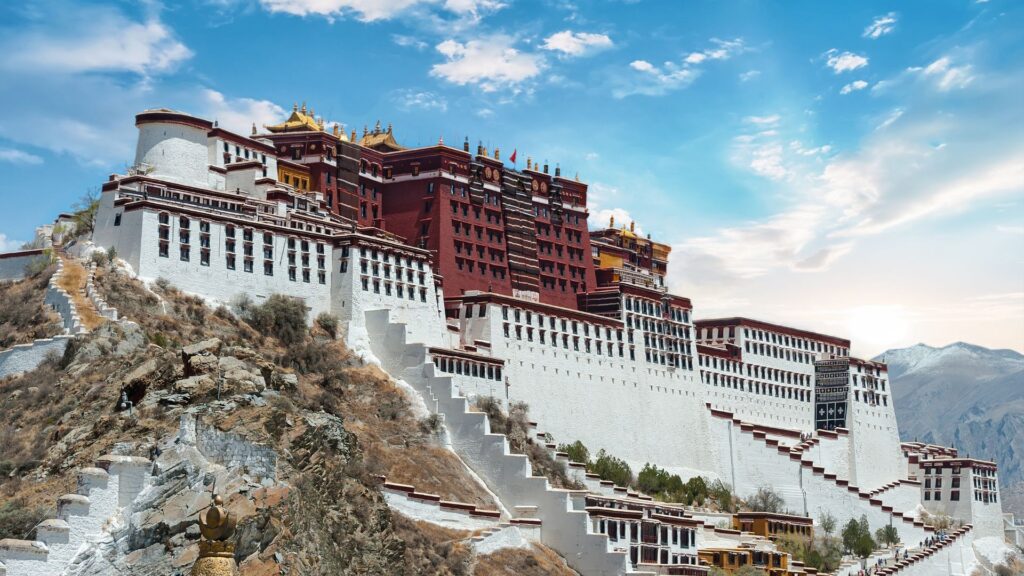
The stunning Potala Palace in Lhasa, Tibet, is one of the most famous historical buildings in China. Many of the most significant artifacts of the faith are housed within this fortress and residence of the Dalai Lama. It built as a center of political and religious power centuries ago.
The most significant shrines in the complex housed in the Red Palace. The first of the two Potala Palaces, which dates to the 17th century. These can found in the Enthronement Hall, which has murals covering its walls that show events from the lives of Tibetan rulers and Dalai Lamas. The Red Palace’s numerous large halls devoted to the teachings of the religion and the ornate tombs, or “stupas,” of several Dalai Lamas are among its other highlights.
Completing in 1648, the White Palace boasts sleeping quarters, studies, and reception rooms. The majority of which have remained unaltered since the Dalai Lama’s exodus from Tibet in 1959. Make sure to see the magnificent Jewel Gardens while in Lhasa. These 90-acre gardens, which initially established in the 1840s as a component of the Dalai Lama’s summer house. It feature everything from opulent palaces and pavilions to serene lakes.
10. Shanghai Promenade, China:
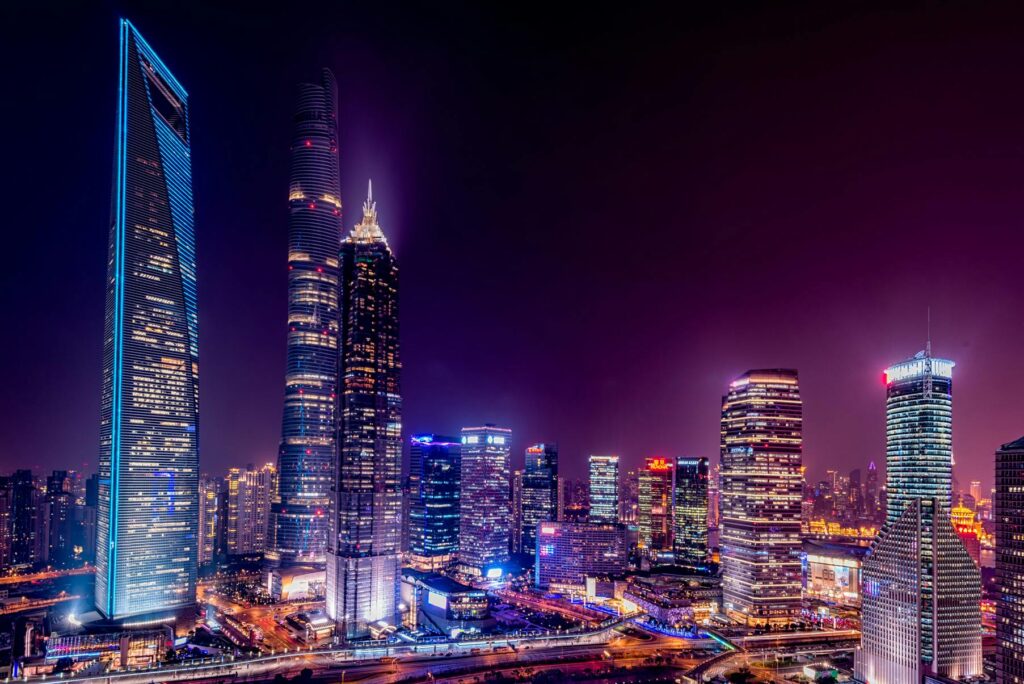
The Bund (Wàitan), also known as Zhongshan Lu, Shanghai’s magnificent riverbank promenade. It is a prime example of smart city planning and preservation. Walk along the Huangpu Jiang River in this spacious pedestrian area. You’ll hardly notice you’re in the heart of Shanghai. The largest city in China (with a population of over 24 million).
The Bund is well-known for its 52 surviving English and French-influenced buildings. Many of which are now restaurants, cafés, shops, and art galleries. The district also known for having a distinctly European atmosphere. Which is attributable to its former status as the site of the city’s International Settlement. Several Art Deco buildings and a range of Gothic and Renaissance influences can seen in the architecture. Includes notable structures like the grand Peace Hotel and the former waterfront customs office with its bell tower.
Visit the 468-meter Oriental Pearl Tower on the other side of the Huangpu Jiang River for the greatest views of the Bund. Make sure to visit the Yu Garden as well if time permits. This must-see garden, lovingly referred to as the “Garden of Happiness,” was first designed and constructed in 1559. Even now, many of the old buildings are still standing.
11. Hangzhou’s West Lake:
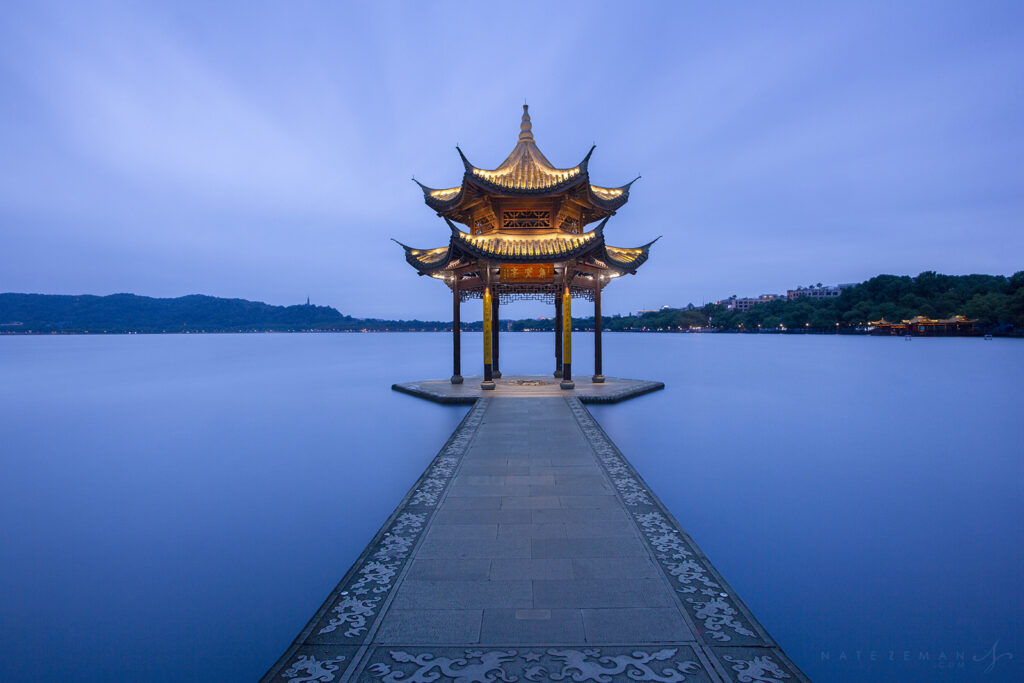
Few Chinese cities can match Hangzhou’s (Hangchow) remarkable concentration of historic sites and ancient temples. Situated at the southernmost point of China’s well-known Grand Canal. The capital of Zhejiang province, West Lake is home to a plethora of rich historical sites. Many of which concentrated around this picturesque six-kilometer-square body of water in the center of the ancient city, encircled by hills, pagodas, and temples.
Divided into five separate sections by artificial causeways that date back to the eleventh century. This is a wonderful location to explore on foot, with each stretch of water you cross meeting another group of excellent old houses. When the many peaches trees bloom in the spring, it’s quite delightful.
A portion of the enjoyment involves lazing on the many charming old bridges around the lake. The most notable of which is the Broken Bridge (Duanqiao), which connects the Baidi Causeway to the coast. And discovering Little Paradise Island, which has four small lakes connected by the Winding Bridge of the Nine Arches.
Make sure you take a ride on one of the numerous tour boats or small pleasure ships that are available to transport you throughout the lake. If you have time, don’t miss the entertaining musical fountain display that takes place every evening.
12. Northern Imperial Tomb, Shenyang:
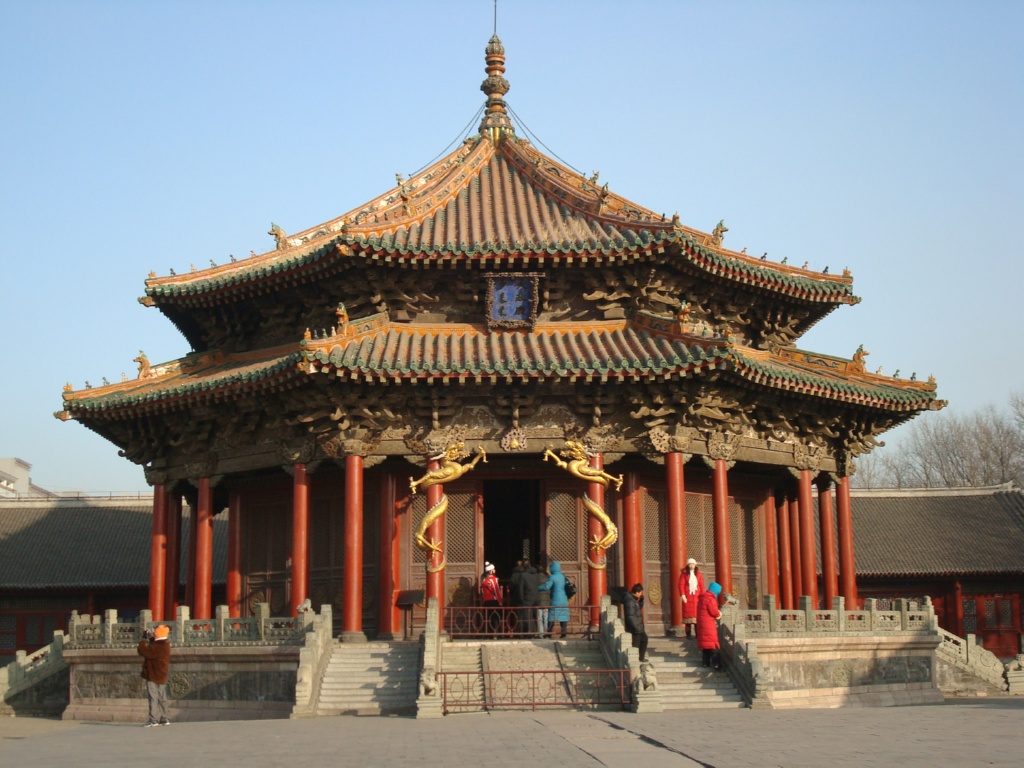
The ancient city of Shenyang is in the mountainous northeastern region of China. The Northern Imperial Tomb, also called the Mausoleum of Light (Zhaoling), is in this significant hub of trade and culture.
One of the most significant historic sites in northeastern China. It recognized for its distinctive architectural style, which combines early Qing-era castle-like structures with conventionally arranged Chinese burial sites. It listed as one of the Imperial Tombs of the Ming and Qing Dynasties on the UNESCO World Heritage Site list.
Emperor Huang Taiji, who ruled from 1626 to 1635, interred here in a vast complex spanning more than 180,000 square meters that took eight years to finish. The location is well-known for its “Path of Souls,” a passageway adorned with sculptures of the emperor’s preferred horses and supported by stone columns.
Another significant location is the magnificent Imperial Palace, which dates to the early Qing era. China’s second largest fully preserved palace complex, after the Imperial Palace in Beijing. The complex, which housed the imperial throne and featured several magnificent courtyards surrounding it, used as the residence of the early Qing Emperors. One of the buildings in the complex is the Hall of Exalted Government (Chongzheng Dian).
13. Leshan Giant Buddha:
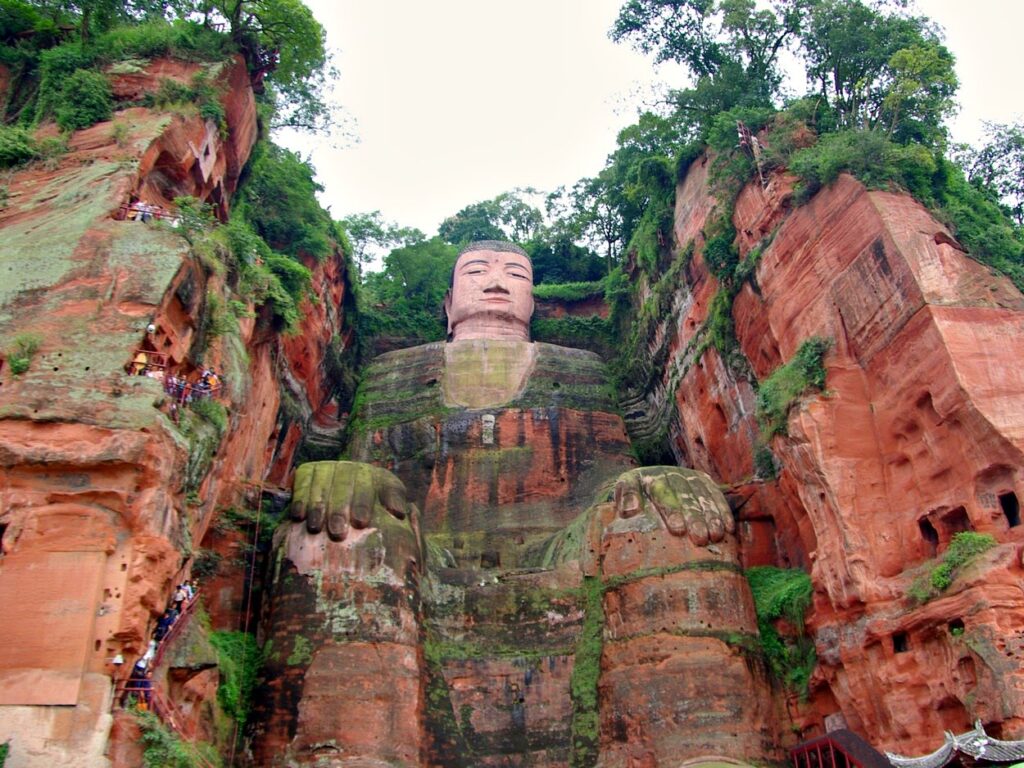
“The mountain is a Buddha, and the Buddha is a mountain.” Thus says the well-known proverb from China, which credited to the magnificent Leshan Giant Buddha, standing 71 meters tall. And as you stand at its foot with the enormous monument towering over you, it makes perfect sense.
This significant religious icon, the largest Buddha sculpture in the world. Totally carved from a stone cliff face and started in AD 713 by a Buddhist monk and finished 90 years later. The monument, which is a representation of the Buddha Maitreya. It is even more striking by the fact that lies above the river. Which intended to calm ship traffic but has instead proven to be dangerous.
A UNESCO World Heritage Site, the Giant Buddha still a major draw for pilgrims from all over the world and considered one of China’s must-see sights. The Leshan Giant Buddha is easily attainable from Chengdu. It is interesting to visit by ferry from the Leshan public docks. Make sure you have enough time in your agenda to explore the beautiful park where the Buddha is located.
14. Hong Kong Skyline:
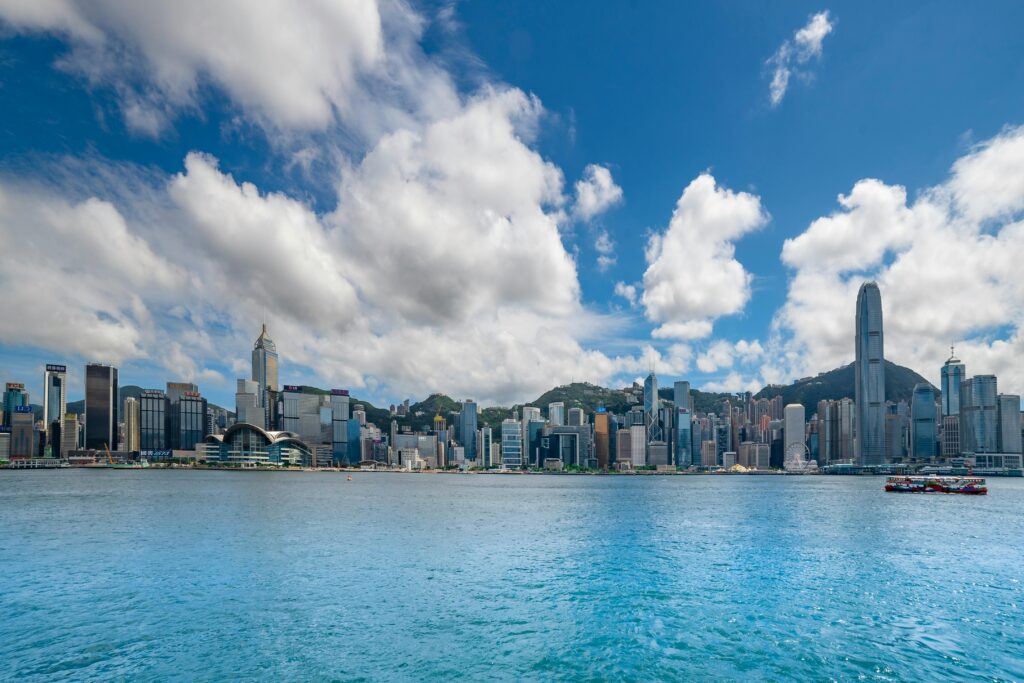
Hong Kong has been the vibrant center of finance and commerce in this region of the Pacific for many years. Its skyline widely regarded as one of the most dramatic in the world. Partly due to the tall hills that surround it and the city’s high skyscraper concentration. Additionally, there are other perspectives from which to appreciate this metropolis.
One of the best views is from Hong Kong Island’s Victoria Peak. Where the city’s massive harbor framed by skyscrapers and is especially lovely at night. The view from Victoria Harbour itself is equally breathtaking. You can also ride one of the well-known ferries in Hong Kong from here. Run by the Star Ferry firm, you can board and go to explore and stroll about other locations, like Kowloon. Alternatively, just remain on board and take in the scenery.
Try to schedule your visit during the nightly laser extravaganza. A breathtaking 360-degree laser light show that uses the skyscrapers of the harbor as a magnificent backdrop. Try to see the performance from the Kowloon side of Victoria Harbour for the finest views.
Are you going on a family vacation? If that’s the case, you should plan a visit to Hong Kong Disneyland. While many of the rides at China’s first Disney theme park are like those at the company’s other locations, special attention made to China’s cultural history when the park debuted in 2005.
15. Zhangjiajie National Forest Park:
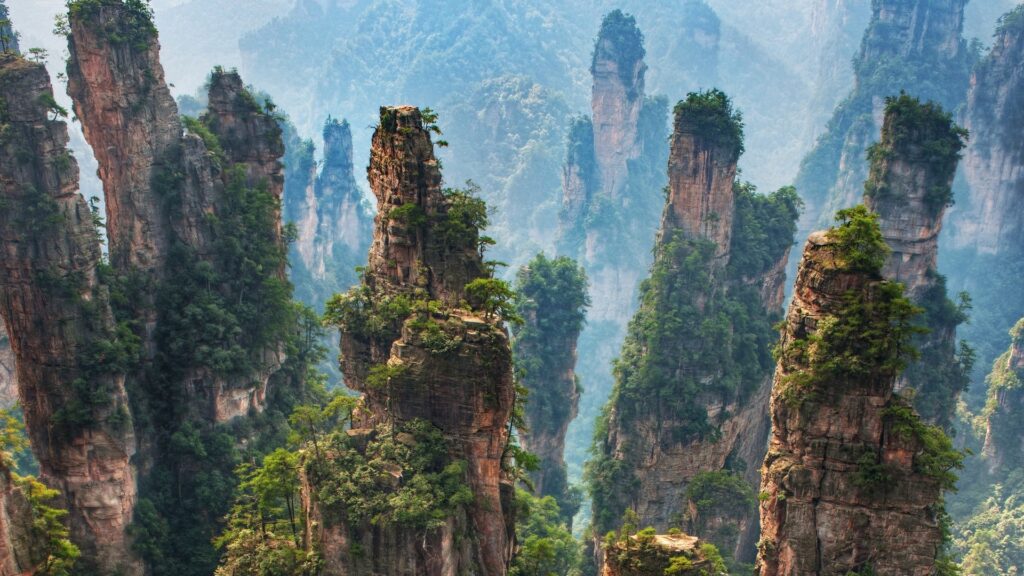
It is easy to understand how director James Cameron found inspiration when you first lay eyes on Zhangjiajie National Forest Park in Hunan province.
This region of breathtaking natural beauty might have easily served as the backdrop for James Cameron’s blockbuster hit Avatar, with its numerous distinctive pillar-like rock formations evoking an amazing alien world straight out of a science fiction film. With a height of 1,080 meters, one of the tallest pillars has dubbed “Avatar Hallelujah Mountain.”
Even though it’s one of the less well-known tourist destinations in China, the journey there is well worth it. The park has some new man-made attractions in addition to its many natural treasures, which best visited as part of an organized trip. Building number one was the Bailong Elevator, often known as the “Hundred Dragons Sky Lift.” With a two-minute elevator ride that can lift groups of up to fifty people 326 meters into the air, this edifice is truly remarkable and provides breathtaking views throughout.
Notable is also the Glass Bridge over the Zhangjiajie Grand Canyon. It hailed as the highest and tallest pedestrian bridge in the world when it opened in 2016. This attraction, which is 300 meters above the earth and stretches 430 meters along a breathtaking cliff face, is one of the greatest things to do if you want to add a little adventure to your day but is not for the faint of heart.
Visit our website Travel India Info, for more information about the places to explore in vacations or mail us at info@travelindiainfo.com. We are happy to assist you. Happy Travelling!!
Recent Posts
Europe Travel Guide: Best Places to Visit & Explore
15 Best Amazing Places to Explore in Scotland
9 Best Amazing Day Trip To Explore from Kyoto
